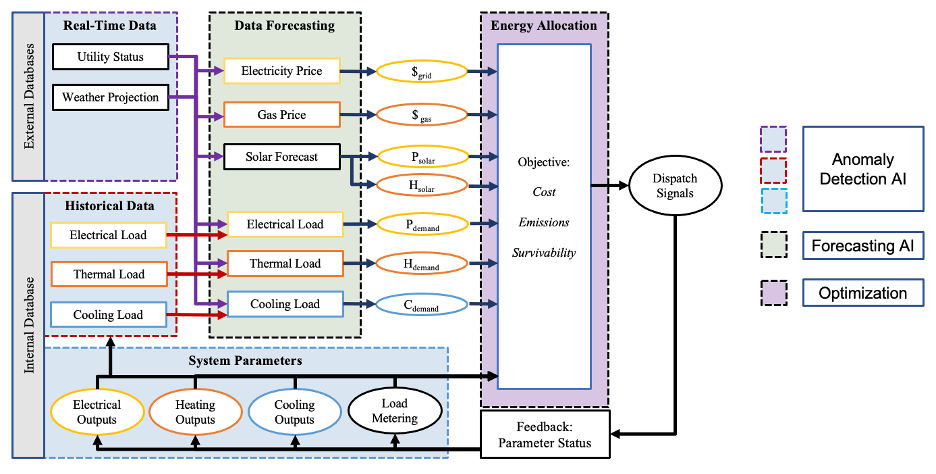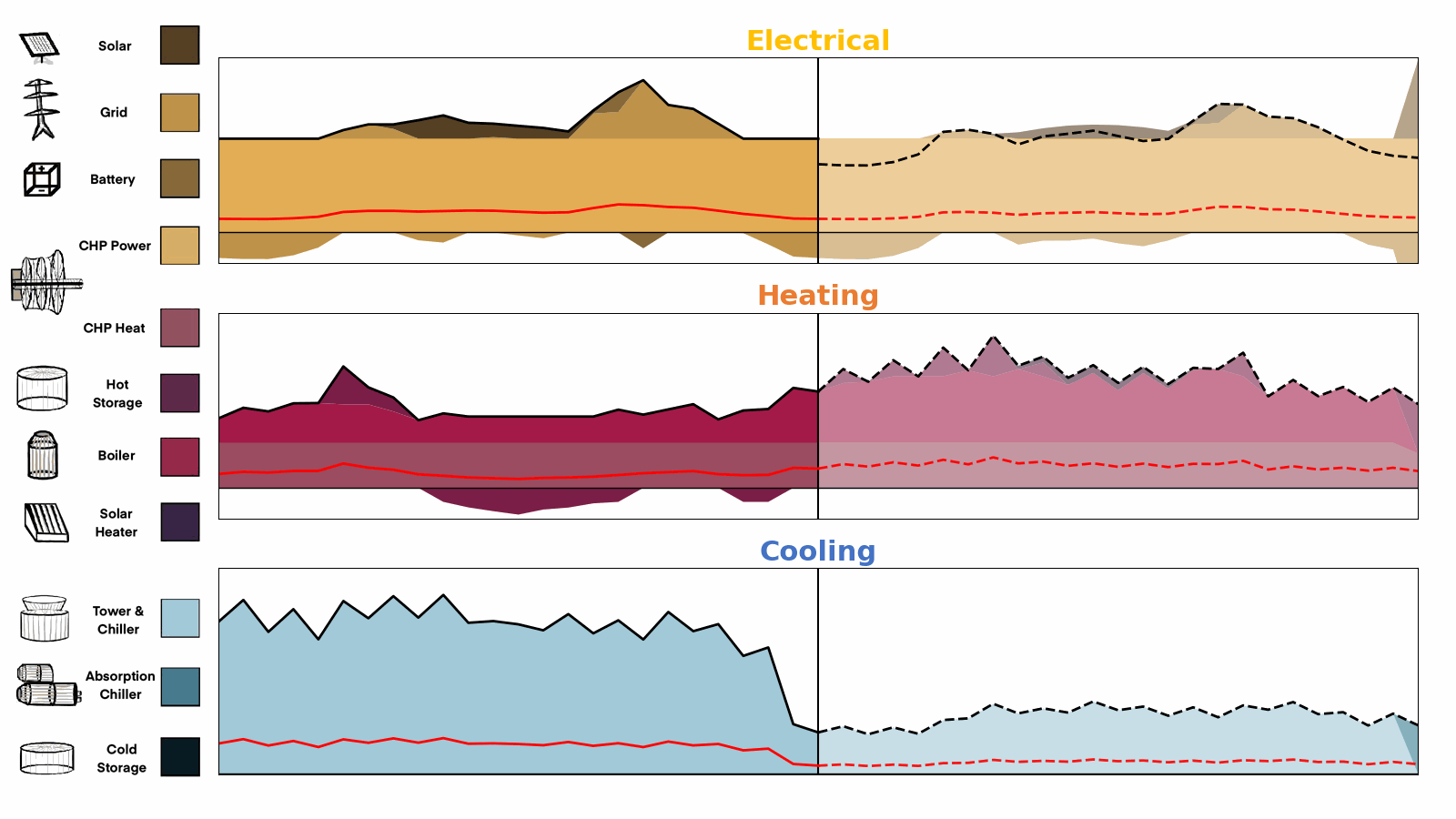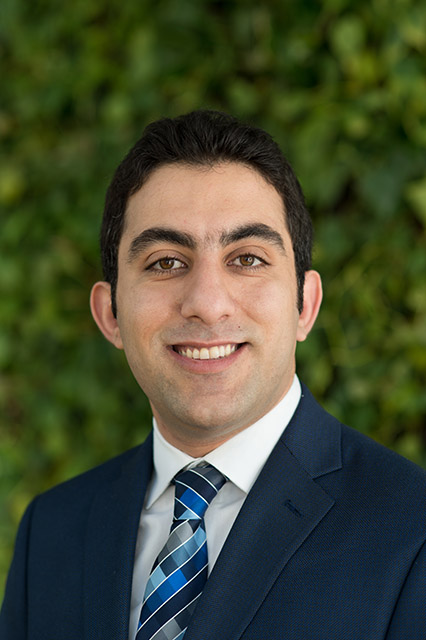Empowering Communities Through Transparent and Interpretable Energy Modeling Platforms
Written by Rachel Gray, Benedict Vergara, Saniya LeBlanc, and Payman Dehghanian, The George Washington University
The design and operation of energy systems build the foundation for district energy systems to meet environmental, security and financial goals. Therefore, developing transparent and interpretable energy modeling platforms, while sharing development plans and experiences with the surrounding communities, will accelerate the transition to clean and interconnected Smart Cities.
Energy Modeling in a Smart City of the Future
Energy modeling platforms offer community leaders, who might lack technical knowledge, the ability to consider all possible technologies, both the physical hardware and the software analytics involved in the generation and management of resources for district energy systems. Collaboration between institutions within large cities empowers community leaders, who might lack financial support, by connecting them to “living lab” examples of installations and retrofitting plans within similar space, environmental and legal restrictions.
Both efforts have been initiated by The George Washington University. Our research team is developing an energy management tool as well as opening our doors to surrounding communities within our nation’s capital to learn from our experience as we transition our campus into an exemplary institution in a future Smart City, Washington D.C.
Challenges and Opportunities
There are excellent open-source and well-developed tools available for energy modeling, but there is no unified platform to consider both hardware and software integration into the energy system. Community leaders and city planners need a unified platform to consider possible energy technologies, sensors, controls, and prediction modules, all accompanied with explanations and educational resources. Such resources are imperative for decision makers who lack the technical understanding of these technologies. Furthermore, city planners are increasingly concerned with the security and resilience of their energy systems in the face of more frequent extreme weather events. Energy modeling tools drive the development of smart cities by providing realistic insight on how a redesigned or retrofitted energy system would perform in the future.
Energy management transition frameworks have been standardized, at a high level, by the International Organization for Standardization, through ISO 50001. This standard highlights the general strategy but lacks information on how regional specifics, such as weather, population tendencies, or regulation, affect the choices made by community leaders.
Leveraging Emerging Technologies
Energy system modernization (e.g., centralized vs. decentralized solutions, controllable vs. renewable generation, or storage options) allow cities to find the right balance between financial, environmental and energy security goals. Operating Combined Heat and Power (CHP) units within the energy mix adds to the complexity of the real-time energy scheduling problem. During recent years, there have been many developments in the algorithms provided by commercial solvers that allow them to solve effectively in terms of solution time and quality. These solvers allow for larger numbers of energy resources within a Smart City to be dispatched conjointly to meet a mutual objective: day-to-day cost efficiency or service continuity during emergencies. Advances in artificial intelligence improve prediction efforts and identify system anomalies, which result in the ability to foresee demand shift, equipment failure or utility price fluctuations as a result of externalities.
A next-generation energy management system (as depicted below) will leverage all technological advancements mentioned to operate under a Model Predictive Control (MPC) or “rolling horizon” framework which predicts, operates, and responds to unforeseen changes.

Figure 1: A next generation Energy Management System (EMS) integrates a variety of evolving artificial intelligence (AI) and optimization technologies.

Figure 2: A next generation EMS leverages renewable and storage technologies to operate under a Model Predictive Control (MPC) framework.
Broader Community Impacts
Developing transparent and interpretable energy modeling platforms enables community development groups to understand city energy use, plan for future energy improvements, and project the results of potential energy system changes. Sharing regional experiences on energy transitions with the surrounding communities within a large city will empower community leaders to take the right steps and develop interconnected Smart Cities.
Our research team at The George Washington University is building an energy management platform focused on model transparency and result interpretability so that those without a technical background can still visualize and learn about how all Smart City technologies fit into a modern energy system. Understanding how ubiquitous sensors and remote controls combined with energy resources can impact the performance of the city, measured in terms of cost, reliability, resilience, and vulnerability, is critical for making future decisions. Our research team will be hosting “living lab” events on our campus to showcase how these different upgrades have made their way into the system operation. The aim is to provide a resource for our region to learn from our experiences as a role model. Through clear models and interpretable results, city planners and community leaders are offered enhanced energy literacy to make informed decisions for the betterment of their citizens.
This article was edited by Aris Gkoulalas-Divanis.
To view all articles in this issue, please go to February 2022 eNewsletter. For a downloadable copy, please visit the IEEE Smart Cities Resource Center.




To have the eNewsletter delivered monthly to your inbox, join the IEEE Smart Cities Community.
Past Issues
To view archived articles, and issues, which deliver rich insight into the forces shaping the future of the smart cities. Older eNewsletter can be found here. To download full issues, visit the publications section of the IEEE Smart Cities Resource Center.



